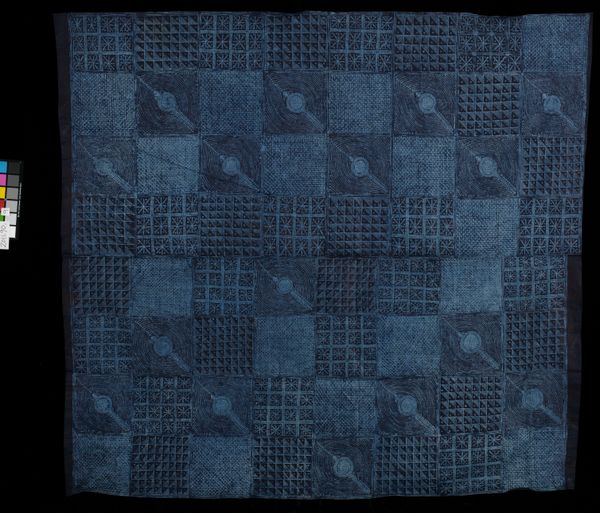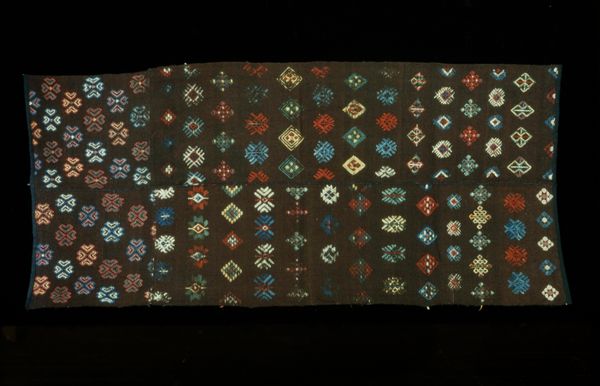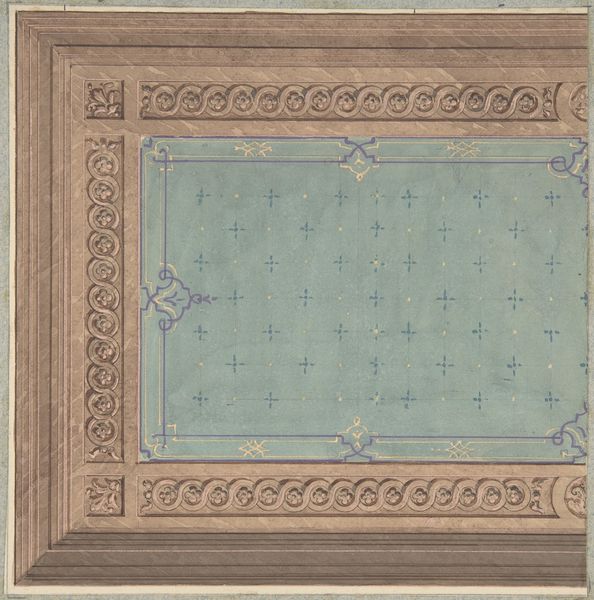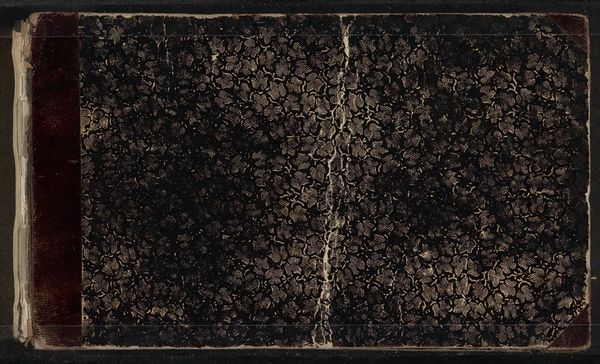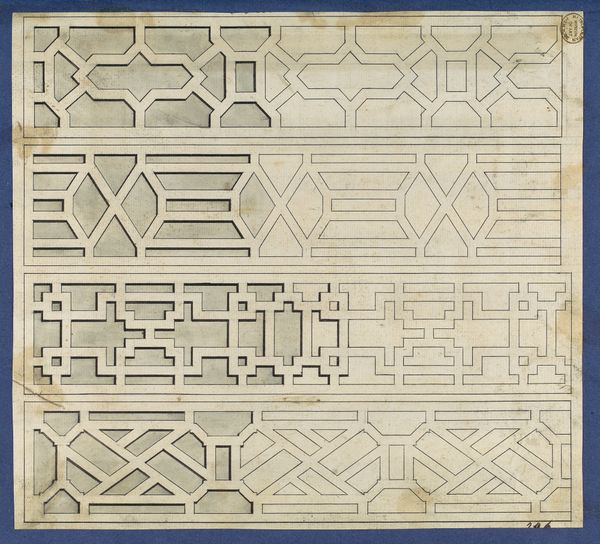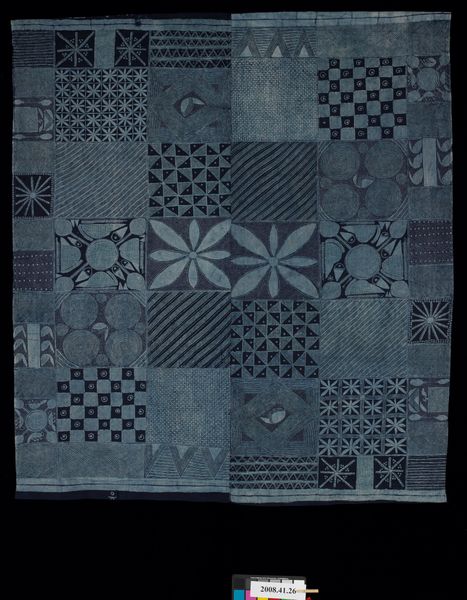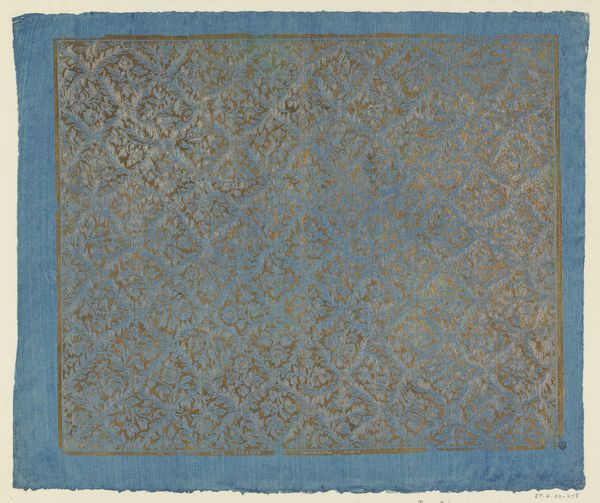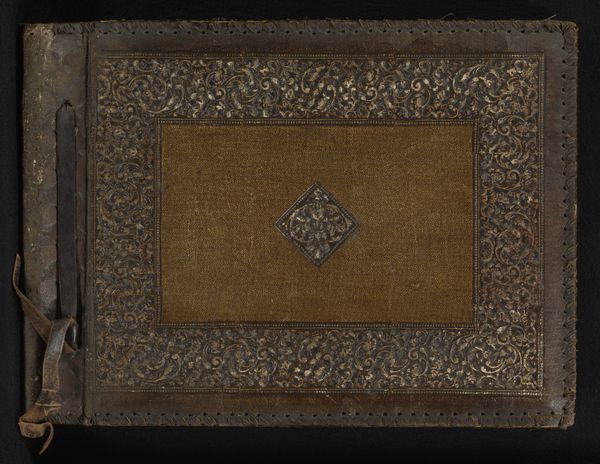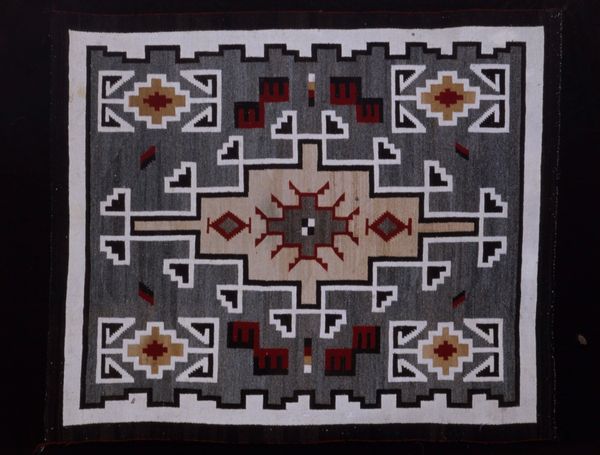
fibre-art, textile, cotton
#
african-art
#
fibre-art
#
textile
#
outsider art
#
geometric
#
line
#
cotton
Dimensions: 68 3/4 x 77 5/8 in. (174.63 x 197.17 cm)
Copyright: Public Domain
Curator: Welcome. We are standing before an Adire cloth wrap dating from the 20th century. This textile work resides here at the Minneapolis Institute of Art. Editor: Immediately, the complex geometric patterns evoke a feeling of organized chaos. The indigo dye creates a strong sense of depth. Curator: The term "Adire" refers to resist-dyed textiles created by the Yoruba people of southwestern Nigeria. These cloths were traditionally made by women, and the techniques have been passed down through generations. It's quite telling how this practice sustains culture. Editor: Thinking about the materiality, the process of resist-dyeing is intensive, layering human effort. One envisions artisans carefully stitching or tying sections of the fabric before it is immersed in the indigo dye, creating such striking contrast. What would they think if we regarded their product as "Art" divorced from its utilitarian role? Curator: That’s an intriguing point! The interplay of light and dark embodies fundamental aesthetic binaries. How the designs interact within the grid also provokes a deep intellectual engagement, don’t you think? Editor: Well, of course, I think of hands immersed in dye baths, of labor and community. The cloth transcends simple surface decoration and gains inherent complexity. And I’m moved by what it can teach about trade, globalization, and local craftsmanship in this age. Curator: In viewing textiles like these, we're really contemplating more than just decoration or use value. It offers insight into larger visual systems of geometry and structure. Editor: I think so, but the focus ought not to lie just in the designs alone, though they are compelling, but also the method of construction and meaning, and where it fits in systems of local commerce and culture. Curator: Certainly a confluence of multiple modes of thought and practice makes up what we consider as "art". Editor: Exactly. Looking at it one last time, one almost feels transported to the workshop where it was born.
Comments
No comments
Be the first to comment and join the conversation on the ultimate creative platform.

